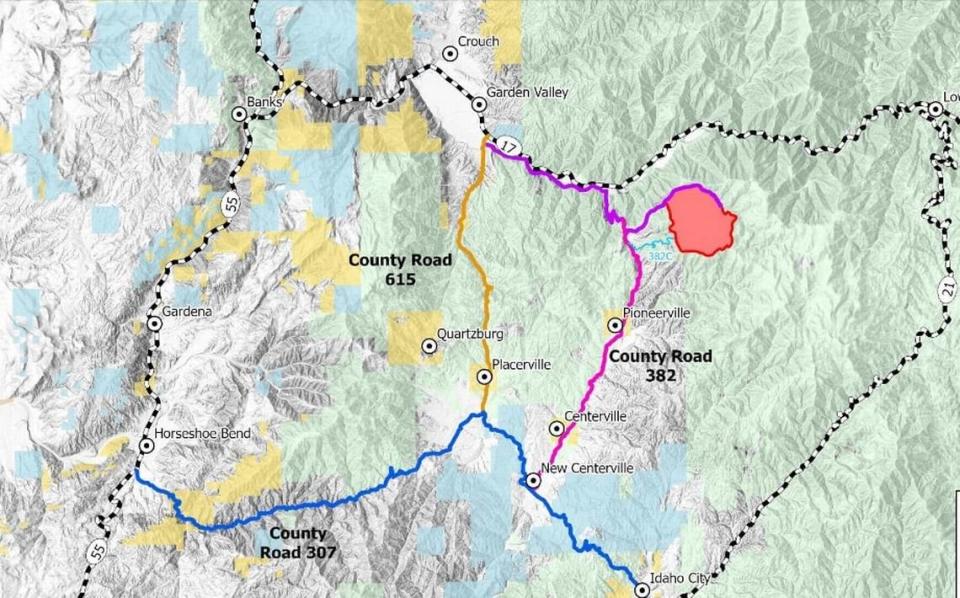Environmentalists fought possible open-pit mine near Boise River. Now this is happening
A copper mining company hopes to explore a site near Boise River headwaters for an open-pit mine north of Idaho City, but environmental groups say the project would threaten water quality and wildlife.
The environmental groups, which include Idaho Conservation League, Idaho Rivers United, Golden Eagle Audubon and Advocates for the West, say this is the latest variation of a project that was struck down twice in federal court because of its environmental impacts.
Idaho Copper sought approval for its project from the U.S. Forest Service, which manages the land near Pioneerville. The company plans to build up to eight miles of roads and clear 122 drill pads near Grimes Creek, a tributary of Mores Creek, which is a tributary of the Boise River. If its exploration project is fruitful, the company wants to excavate copper and molybdenum.

“If all goes to plan, this project will result in one of the largest open-pit mines in the Americas that has the potential to jeopardize one of Boise’s primary sources of drinking water,” said Nick Kunath, conservation program manager at Idaho Rivers United, in a news release.
Andrew Brodkey, chief operating officer for Idaho Copper, told the Idaho Statesman by phone that the project will not affect Boise’s drinking water.
He said the federal court decision led the company to revise its exploration plan to mitigate the challenges.
In 2012, Idaho City made national headlines when Advocates for the West filed a lawsuit on behalf of the three conservation groups. It challenged the Forest Service’s decision to approve the company’s plan. A federal judge sided with the conservation groups, finding that the Forest Service failed to address water quality threats posed by the company’s extensive drilling plan.
In 2016, the same group again sued the Forest Service after it approved a five-year drilling project, from American CuMo Mining Corp., to evaluate the feasibility of the mine in the headwaters of Grimes Creek, the Idaho Statesman reported. A judge sided with the conservation groups again, saying the drilling plan would jeopardize the rare Sacajawea’s bitter root flower. The site is home to the largest known concentration of the plant, according to the judge.
In Idaho Copper’s new plan, the company reduced the miles of new roads from 10 miles to eight and reduced the number of drill pads, Brodkey said.
“Remember, no one’s building a mine tomorrow,” Brodkey said. “All we’re trying to do is finish our drilling.”
American CuMo Mining Corp. told the Statesman in 2016 that the area it wants to mine in the Boise National Forest is the largest unmined molybdenum deposit in the world.
Now the CoMu project is back and the conservation groups are calling on the public to express their concerns to the U.S. Forest Service, which iscollecting comments on the project until Thursday, Nov. 2.
Idaho Copper needs approval from the Forest Service, which is expected to release an environmental assessment of the project this winter, the conversations groups said in the release.
Land use changes by Boise have been big. Why that is causing ‘a major problem’ for wells
Federal environment officials say permit for Idaho mine may violate Clean Air Act
Idaho’s largest wilderness area just got a tiny bit bigger. Here’s how that happens
Big tech companies look to set example by providing clean energy to Idaho Power’s grid
